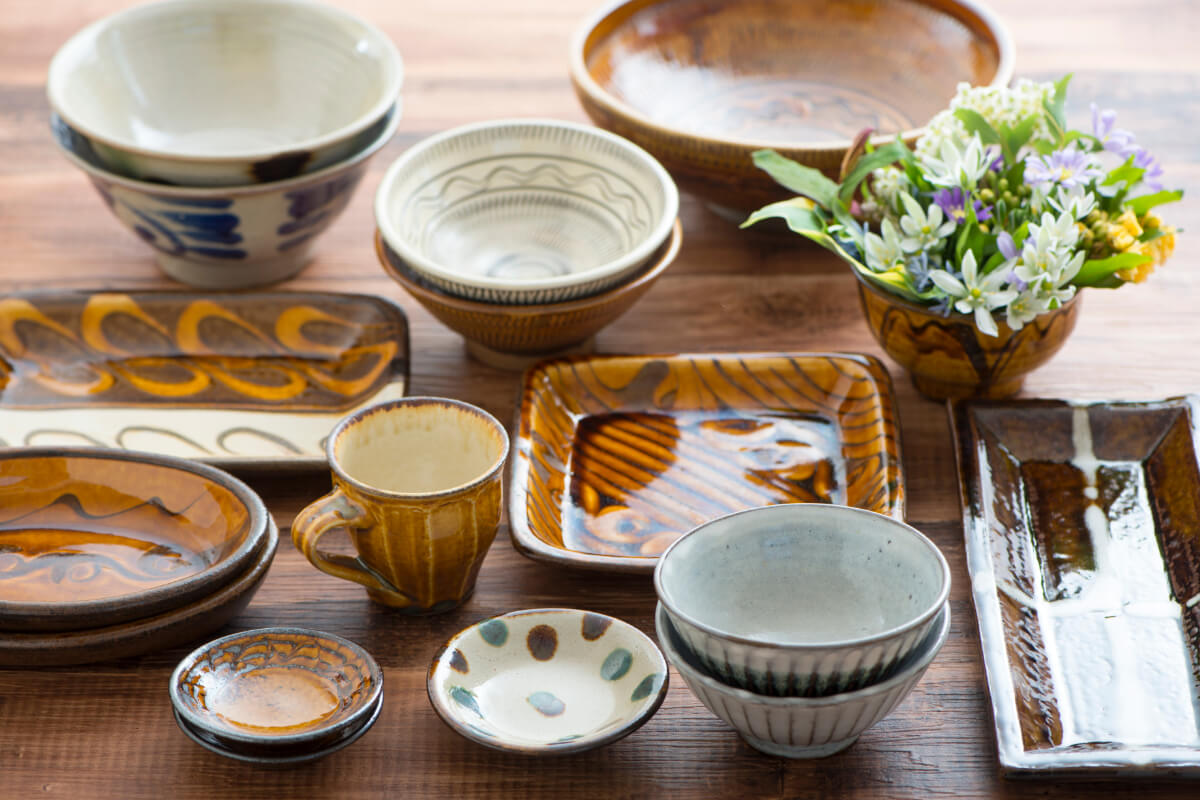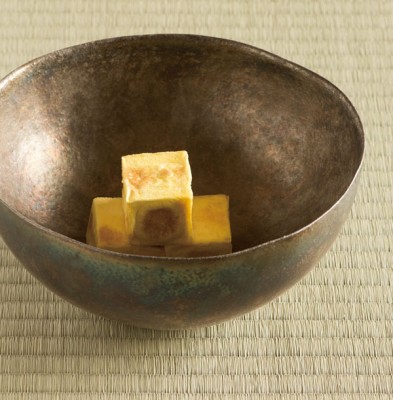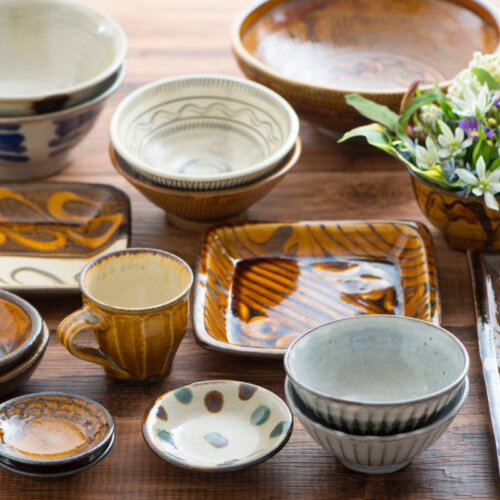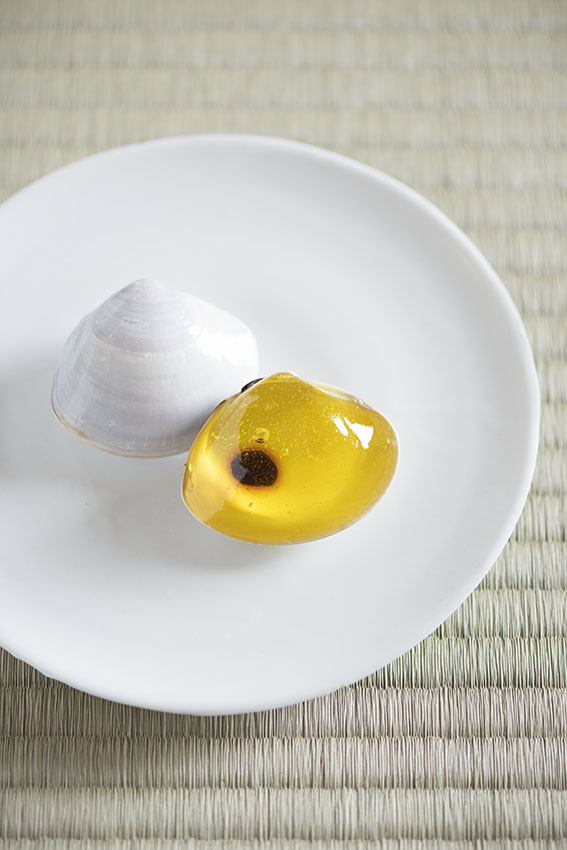Chapter 2: A bowl that reflects the moon

After the passing of the equinox, when touches of autumn gradually creep into the breeze, Japanese start to yearn for bowls and confectionary that remind us of the moon. This is the time of the eighth month in the old lunar calendar, which came right in the middle of the three months of autumn that were known as “mo,” “chu,” and “ki.” What’s more, the full moon of this month, which is otherwise known as “chushu” (mid-autumn), is in fact the harvest moon, the moon that appears on the 15th night. Japanese gave the moon (“tsuki” or “zuki”) poetic names that made reference to the time that it appeared. The moon of the previous night, the 14th, was called the “machi-zuki.” Then from the 16th through the 20th, each moon had a different name: “izayoi,” “tachimachi-zuki,” “imachi-zuki,” “fushimachi-zuki,” and “fukemachi-zuki,” in turn. The depth of feeling that the Japanese of old had for the moon was something quite remarkable.

Vessel: Ginsaibachi.
Sweet: Tamagoromo by Kokurakamejudo.
Photo by Tetsuka Tsurusaki. Cooperation: Kashima Arts.
Served in this silver bowl, which has a luster not like the sky on a rainy night but the moon shining, peeping through the clouds, we find some pieces of outstanding confectionary from Etchu-Yatsuo— well-known from the Owara Kaze no Bon Festival. Agar agar and sugar have been added to whipped egg whites, and the mixture has been brushed with egg yolk and baked to create these tamagoromo sweets by Kokurakame Judo. Their golden color, which is reminiscent of fried eggs and makes them look like they would be nicely aromatic, is the first thing that catches the eye. The texture, so delicate that these tamagoromo melt in the mouth as quickly as light snow might, keeps their sweetness from feeling too heavy. While these tamagoromo are by no means an expensive snack, their casually artistic appearance placed in this silver bowl may remind you of the light that shines through from between the clouds.
The classic accompaniment to moon viewing is, of course, dango—sweet rice dumplings. But depending on the vessel, the idea of moon viewing can arise even with sweets that do not refer directly to the moon or sweets that are not designed to look like the moon. This is also one of the pleasures that can be enjoyed through the act of combining sweets with a vessel.


